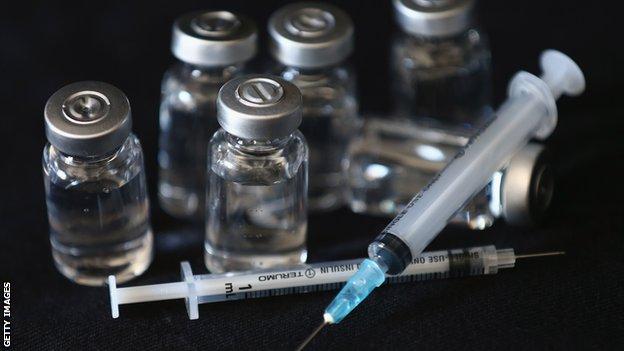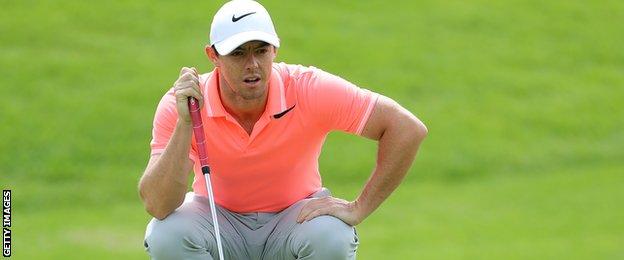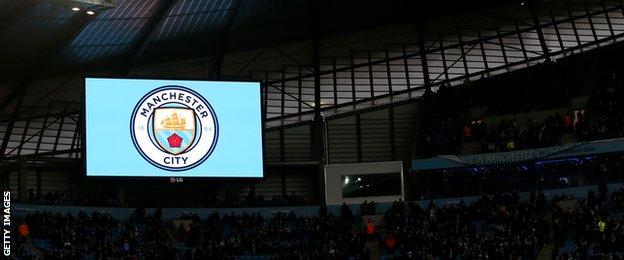Drugs testing in football: At least 39% of EFL players not tested in 2015-16
Last updated on .From the section Football

At least 39% of players who played in the English Football League last season were not drugs tested by UK Anti-Doping (Ukad), according to official figures.
Ukad, which carries out testing on behalf of the Football Association, took 1,204 samples from 1,989 players to appear in the EFL in 2015-16.
From 550 players to play in the Premier League, 799 samples were taken. There were no tests in the National League.
These figures do not account for players being tested more than once.
That means one player being tested five times would account for five samples, while some samples may have been taken from players who were registered with clubs but did not make a first-team appearance.
The figures, released under the Freedom of Information Act, show only 36 samples were taken from 169 players to appear in Women's Super League One - the top flight of domestic women's football in England - meaning at least 78% of players were not tested.
The Football Association said that "like any sport" it prioritised its anti-doping programme "at the elite end".
It added: "This applies not just to staggering downwards the number of tests per competition but also in terms of focusing attention around those players playing the most number of first-team minutes.
"In addition, the anti-doping programme is research and intelligence-led, meaning any player the FA believes presents a particular doping risk will be targeted."
A spokesperson for Ukad told BBC Sport: "Like all sports, we create and deliver a testing programme for football which places resources where they are most effective in order to target where we believe the greatest risk of doping lies.
"But anti-doping programmes are no longer focused solely on testing and test numbers. There are 10 anti-doping rule violations under the World Anti-Doping (Wada) code, of which the presence of a prohibited substance in a sample is just one."
How do the numbers stack up?
While there were more samples obtained than players who appeared in the Premier League during 2015-16, the ratio of samples to players tested across the three divisions making up the EFL was far lower:
- In the Championship, 540 samples were taken from 689 players to make a minimum of one appearance last season, meaning at least 21% were not tested.
- In League One, 347 samples were taken from 742 players to make an appearance, meaning at least 53% of players were not tested.
- In League Two, 317 samples were taken from 749 players to make an appearance, meaning at least 57% of players were not tested.
These figures do not include samples collected from under-18 and under-21 squads or from national squads, while any players or teams competing in European competition are also subject to Uefa's anti-doping programmes.
According to Ukad, which says every anti-doping rule violation is listed on its website, Brentford midfielder Alan Judge was the only player in England and Wales tested on behalf of the FA to breach doping regulations during the 2015-16 season - an offence for which he was reprimanded.
The samples taken by Ukad, the only organisation that drug tests on behalf of the FA, are tested for both performance-enhancing and recreational drugs. The FA says there were three failed tests by unnamed players for recreational drugs last season.

'More tests scheduled for 2016-17'
Ukad, which carries out testing across more than 50 Olympic, Paralympic, Commonwealth and professional sports, says "it is incumbent on us as a publicly funded body to use our resources as effectively as possible across these sports and to target the right people at the right time".
But it also said the FA is "one of a small number of national governing bodies which supplements the testing programme allocated by Ukad" - and stressed the scale and breadth of testing within English football has "grown year on year".
"No other national governing body in the UK dedicates as much resource to prevent doping in its sport," the FA said, adding it operated "one of the most comprehensive national anti-doping testing programmes in the world.
"The programme is flexible in order to be able to respond to any emerging doping risk and adaptable to meet the demands of the growing game, with more tests already scheduled for this 2016-17 season and a further increase, again, in 2017-18."
The Press Association reported last Friday that the FA intends to double the number of tests carried out in 2017-18 compared to 2015-16, at a cost of almost £2m.
How do other major leagues in Europe compare?

During 2015-16, fewer samples were collected from players in the top two tiers of men's football in Germany - which each contain 18 teams - than in the top two tiers in England collectively, according to the German anti-doping agency (Nada).
However, more samples were collected per player in the German second division than in the English Championship, as there were 209 fewer players in Bundesliga Two.
In total, Nada obtained 1,110 samples from players in the top two leagues in Germany last season, and carried out additional tests on German national team players and around relegation matches.
In Spain, since the country's anti-doping body was declared non-compliant by Wada in March 2016, there has been an absence of drugs testing.
The most recent published results in Italy show the country's national anti-doping organisation carried out 3,309 tests across the whole Italian Football Federation in 2014, resulting in one adverse analytical finding and 65 atypical findings.
In March 2016, a BBC Sport investigation found only eight drugs tests had been conducted in Scottish football between April and December 2015, with 20 further tests in the first three months of 2016.
That prompted the Scottish Football Association to announce it had "already made plans to enhance the provision of testing from next season and will do so from its own funds".
What are other sports doing?

In rugby union, BBC Radio 5 live's Chris Jones reported on 26 January that "only about one third of Premiership players were tested during the 2015-16 season as part of the Rugby Football Union's anti-doping programme".
Golfer Rory McIlroy and tennis player Andy Murray called for improvements to the drug-testing regimes in their respective sports last year, with McIlroy even suggesting he could "get away with" doping at the time.
A report by Wada on the anti-doping methods employed at the Rio 2016 Olympics found that of the 11,470 athletes, 4,125 (36%) had no record of any testing in 2016, of whom 1,913 were competing in 10 "higher-risk sports".
Toni Minichiello, the former coach of Olympic and world heptathlon gold medallist Jessica Ennis-Hill, said in January "football isn't testing to the same level as athletics".
'Fans need total confidence in the competition'

In 2015-16, the Championship was the fourth-best attended football league in Europe, even outperforming Italy's Serie A in attracting a total of 9.7 million fans at an average of 17,583 per match.
The combined average attendance across the whole EFL was 9,933 per match, with the cheapest matchday ticket last season the £10 charged by Derby County, according to the BBC's 2015 Price of Football study.
"Like fans of other sports they need total confidence in the fairness of the competitions they watch week in, week out," said Malcolm Clarke, chair of the Football Supporters' Federation and the only fan representative on the FA Council.
"It is vital the game does not jeopardise this vibrant support by allowing the integrity of its competitions to be called into question."
'There should be testing in the National League'

Attendances in the National League exceeded one million in the 2015-16 season, with Tranmere Rovers averaging crowds of more than 5,200 for their home games.
The cheapest matchday ticket in the division was £13.50, at Southport, according the BBC's 2015 Price of Football survey.
"I am a bit surprised that there were no drugs tests at all [in the National League]," Forest Green Rovers chairman Dale Vince told BBC Sport.
"It is a professional league. There are very few part-time clubs in our league these days.
"Drugs in sport is a real issue and if testing is happening in the top four leagues in English football I don't see why it shouldn't be in the fifth league as well."







